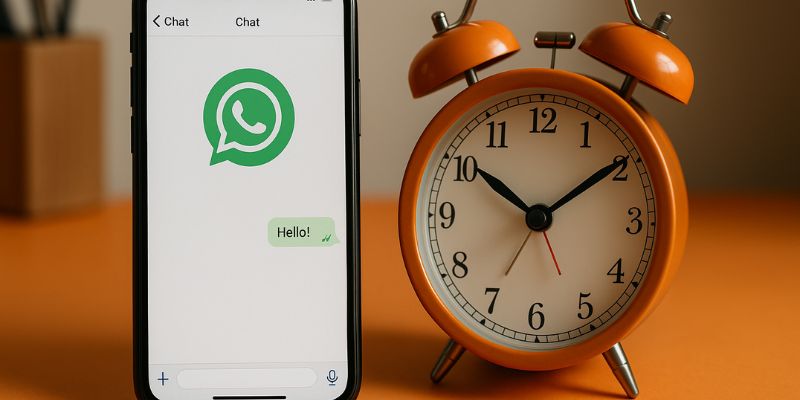Tools to Improve WhatsApp Response Times
In today’s fast-paced world, efficient communication is crucial, especially for businesses and individuals who rely on WhatsApp for their daily interactions. Improving WhatsApp response times can significantly enhance productivity and customer satisfaction. This article will explore various tools and techniques to optimize your WhatsApp communication, ensuring that you respond promptly and effectively.
Why Improving WhatsApp Response Times Matters
Prompt responses on WhatsApp can lead to increased customer trust and satisfaction. In business contexts, quick replies can mean the difference between gaining or losing a customer. By reducing response times, you can enhance your reputation as a reliable and efficient communicator.
Using WhatsApp Business Tools
WhatsApp Business offers several features designed to improve response times. These tools are particularly beneficial for small to medium-sized businesses looking to streamline their communication processes.
- Quick Replies: This feature allows you to save and reuse messages that you frequently send. By typing a short command, you can quickly insert a pre-written message, saving time and ensuring consistency in your responses.
- Labels: Organize your chats with different labels such as ‘New Customer’, ‘Pending Payment’, or ‘Follow-up’. This makes it easier to prioritize messages and respond to the most urgent ones first.
- Automated Messages: Set up automated greeting messages and away messages to inform contacts of your availability. This keeps them informed and allows you to manage their expectations regarding response times.
Leveraging Third-party Tools
In addition to WhatsApp’s native features, several third-party tools can further enhance your response times.
- Chatbots: Implementing AI-driven chatbots can handle common queries instantly, allowing you to focus on more complex issues. Chatbots can be programmed to answer FAQs, guide users through processes, and even escalate issues to a human operator when necessary.
- Integration with CRM Systems: Connecting WhatsApp with a CRM system ensures that all customer interactions are tracked and managed efficiently. This integration allows you to access customer data quickly and provide personalized responses.
- Notification Management Apps: Apps like Pushbullet or IFTTT can help manage notifications across multiple devices, ensuring you never miss an important message. These apps can be configured to alert you of messages from specific contacts or with certain keywords.
Best Practices for Faster Response Times
Beyond tools, adopting certain best practices can naturally improve your WhatsApp response times.
- Set Specific Times for Checking Messages: Allocate specific times during the day to check and respond to messages. This method helps in managing tasks efficiently and prevents constant interruptions.
- Prioritize Messages: Not all messages require immediate attention. Use the labeling system to prioritize messages based on urgency and importance.
- Keep Responses Concise: While it’s important to provide detailed information, being overly verbose can slow down your response rate. Aim for clarity and brevity.
Case Studies: Real-world Examples
Let’s explore how some businesses have successfully improved their WhatsApp response times using these tools and practices.
For instance, a local restaurant implemented WhatsApp Business to manage reservations and customer inquiries. By using quick replies and automated messages, they reduced their average response time from 30 minutes to under 10 minutes, leading to increased customer satisfaction and more bookings.
Another example is a retail company that integrated their CRM system with WhatsApp. This integration allowed their sales team to access customer purchase history instantly, enabling them to provide personalized recommendations and faster responses to inquiries about orders and products.
Conclusion
Improving WhatsApp response times is not just about being faster; it’s about being more efficient and effective in your communication. By leveraging WhatsApp’s built-in tools, exploring third-party applications, and adopting best practices, you can significantly enhance your communication strategy. The result is a more productive workflow, satisfied customers, and better business outcomes.
Frequently Asked Questions (FAQ)
How can I use quick replies on WhatsApp Business?
Quick replies are saved messages you can reuse by typing a shortcut. Go to WhatsApp Business settings, select ‘Quick Replies’, and create templates for common responses.
What are the benefits of using chatbots on WhatsApp?
Chatbots can handle routine queries, freeing up time for more complex issues. They ensure 24/7 customer service and can improve response times significantly.
How do I integrate WhatsApp with a CRM?
Integration typically involves using a third-party service or API that connects your CRM to WhatsApp, allowing you to manage and track interactions seamlessly.
Can automated messages replace human interaction?
While automated messages are useful for initial contact and simple queries, they cannot fully replace the personalized touch and understanding a human can provide.
What are some best practices for managing WhatsApp notifications?
Use notification management apps to filter important messages. Set specific times to check notifications to avoid constant interruptions and maintain focus on other tasks.
How does labeling help in managing WhatsApp chats?
Labels help categorize chats based on urgency or type, allowing you to prioritize and respond to the most important messages first.
Why is it important to keep responses concise?
Concise responses save time for both the sender and the recipient. They help convey the necessary information quickly, allowing for faster communication.
What are the potential drawbacks of using third-party tools?
Third-party tools may have privacy and security concerns. It’s essential to choose reputable services and ensure they comply with data protection regulations.
